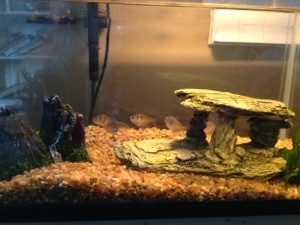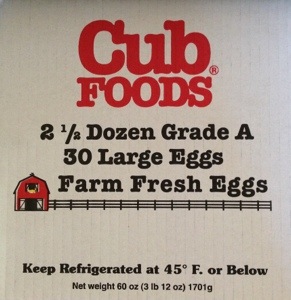Talking math with your kids takes two forms: (1) seizing opportunities the kids initiate, and (2) creating opportunities where there might previously have been none.
This is story of creating an opportunity—first with my four-year old, then with my seven-year old.
—
I was doing the dishes one morning while Tabitha (who was four, nearly five) drew in the other room. She came in for help.
Tabitha: (4 years old) Where are the scissors?
Me: I don’t know. How many pairs of scissors do we have anyway? We have a lot, but we can never find them. Why is that?
T: I just need one pair of scissors.
Me: Isn’t it weird that scissors come in pairs?
T: Yeah.
Me: What else comes in pairs?
T: Pants do. And shoes.
Me: Oooh. Good. What else?
T: Legs. And ears. And noses [giggles].
Me: Noses?!? Noses don’t come in pairs, silly!
T: Eyes do. And glasses.
Me: Nice! Eyes. You know, it’s not just people who have eyes that come in pairs. Fish do, too.
T: Of course!
Me: How many pairs of eyes are in our aquarium?

T: Seven.
Me: So how many eyes is that?
T: Nine?
[Griffin (who was seven years old) wandered in from the living room.]
Me: Griff, how many pairs of eyes are in our aquarium?
G: Seven.
Me: So how many eyes is that?
G: Fourteen.
Me: How did you know that so fast?
G: Seven plus seven is fourteen.
Me: Right. But that’s two sevens. Don’t we need seven twos?
G: Yeah, but it’s the same answer either way.
So What Do We Learn?
This conversation was about groups and units. If kids are going to understand place value, they’ll need to be able to think about different units. Sometimes a unit is a thing (an eye); sometimes a unit is a group (a pair of eyes). We counted both.
When Griffin finds two sevens instead of seven twos, he using the commutative property of multiplication. Sometimes called the rearrangement property, it is a fancy way of saying that when you multiply, it doesn’t matter which number comes first. 7×2=2×7. Following up on Griffin’s strategy requires more math knowledge than many parents are comfortable with. That’s OK. That’s why Talking Math with Your Kids is here. Shoot us a note with your questions.
But if you are comfortable with the idea (and/or the vocabulary) of commutative, you could follow up with Does this always work? or a discussion of what things in the world are commutative and what things are not.
Real-world example? In the bathroom (forgive me), Wipe, Flush, Wash is not commutative. Do those in a different order and get different results. But Use the potty, Brush your teeth, Put on your pajamas? Totally commutative; the order we do them in does not matter.
Starting the Conversation
Give kids practice counting both groups and individual things. Just help them notice that some things usually do come in groups. Eggs, bicycle wheels, grapes; these are all things that usually come in groups. Ask whether the groups are always (or almost always) the same size.
Notice with your children that your grocery store (probably) has this package of eggs, and wonder aloud how many eggs are in two-and-a-half dozen.

Correcting Tabitha when she added 7 and 2 to get 9? That wasn’t nearly so important. She was four at the time; multiplication facts typically become important around eight or nine years old.
